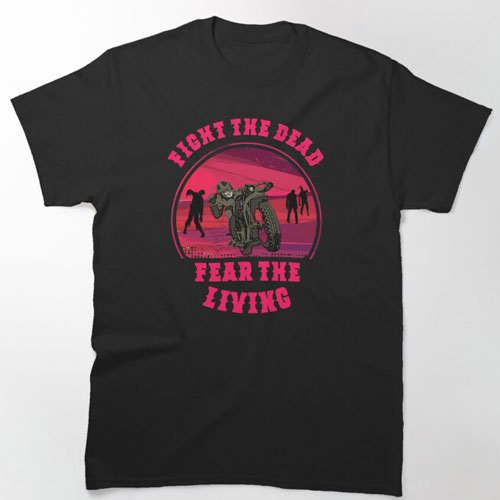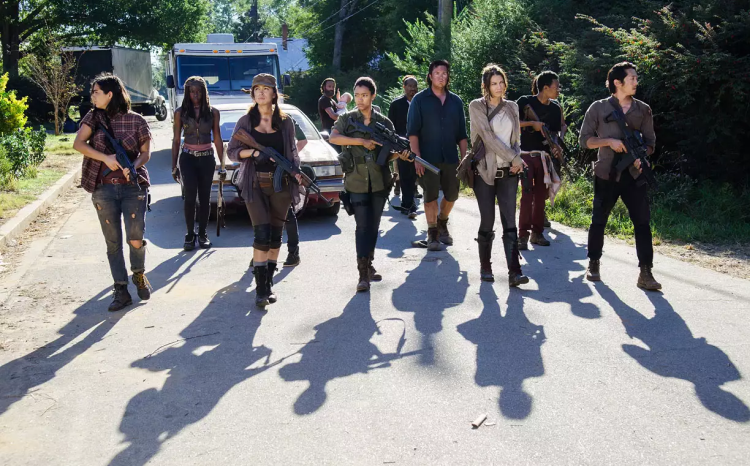Fight the Dead, Fear the Living

The world we knew is gone. A global outbreak of catastrophic proportions has occurred, leading to the reanimation of the dead, who now hunt the living. The collapse of civilization happened quickly, with no government, no supplies, no communication, and no forms of entertainment. Now, in a world overrun by the undead, the survivors must learn to adapt and truly begin to live.
Following cryptic clues left behind by a fellow survivor, Rick leads his group on a perilous journey through decaying urban landscapes to find “the lost city,” rumored to hold untold riches and safety from the undead horde. Along the way, they encounter rival factions vying for control over resources as well as unexpected allies who may hold key information about this mythical sanctuary.

The Walking Dead’s tagline is “Fight the Dead: Fear the Living.” Indeed, most post-apocalyptic scenarios, whether they include the undead or not, take a dim view of human nature, reducing the whole of humanity to its Darwinian essentials. “You are either the butcher or the cattle.”

The series explores how the living are changed by the realization that those who survive can be far more dangerous than the walking dead. With limited resources and dwindling hope, they must devise a plan to defend themselves against overwhelming odds while also dealing with internal conflicts threatening their unity.

The survivors individually encounter zombies and then barricade themselves together somewhere (a farmhouse, a mall, a bar, or what have you), spending a good deal of time keeping the zombies out and fighting among themselves. But uh-oh, the zombies get in anyway, some folks die, and others don’t, and one or two are surely zombified.

The world of The Walking Dead is one filled with desolation and decay. Cities and towns once bustling with life now lie in ruins, reclaimed by nature and overrun by hordes of undead walkers. Skies are often gray or overcast, reflecting the grimness that has befallen civilization. Abandoned highways stretch out as far as the eye can see, lined with abandoned cars and remnants of failed escape attempts. Nature reclaims its territory, gradually enveloping structures left behind by humans who were forced to flee or succumb to the outbreak.

Survivors navigate through both rural landscapes and decaying urban environments, where dilapidated buildings stand as eerie reminders of what once was. Scavenging for supplies becomes a necessary way of life amidst the constant struggle for survival.

Communities range from makeshift campsites to fortified settlements fashioned from barricades and fences designed to keep out walkers. Fires crackle at night while survivors huddle together for warmth and protection against lurking threats. Resources are scarce—food is rationed, clean water is precious—and acquiring them often requires venturing into dangerous territories infested with walkers or encountering other desperate groups vying for limited supplies.

Morality becomes fluid in this new reality; some survivors cling tightly to their humanity while others embrace ruthless pragmatism in order to survive another day. Trust is earned cautiously amidst an atmosphere teeming with uncertainty and betrayal. Overall, The Walking Dead presents a world where hope flickers amid darkness—a harsh landscape that tests the limits of human endurance while exploring themes such as resilience, morality, community-building, loss, and redemption.




